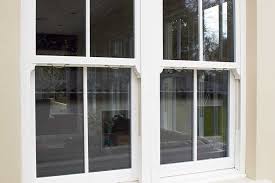The Benefits and Drawbacks of Opting for a Loan Top-Up for Home Renovations

Image Source: economictimes.indiatimes.com
When it comes time to renovate your home, financing the project can be a major concern. Many homeowners consider a loan top-up as a viable option. This involves adding to your existing loan amount to cover renovation costs, typically under the same terms as your current loan. This choice can be particularly advantageous if managed through a skilled mortgage broker Sydney, who can provide tailored advice based on your financial situation. Here’s a closer look at the pros and cons of using a loan top-up for home improvements.
Advantages of Using a Loan Top-Up for Home Renovations
1. Convenience
One of the primary benefits of a loan top-up is the convenience it offers. Instead of scouting for new loans with different lending criteria, you can simply increase the size of your existing mortgage. This keeps things straightforward, as you continue dealing with the same lender and terms.
2. Lower Interest Rates
Typically, loan top-ups are offered at the same rate as home loans, which are usually lower than personal loans or credit cards. This can mean significant cost savings over time, making it a cost-effective way to borrow money.
3. Quick Processing Time
Since you’re borrowing more from an already approved loan, the lender already has most of the information they need about you. This can lead to faster approval and less paperwork than applying for a new loan.
4. Tax Benefits
In some cases, if the top-up on your loan is used towards property renovation or construction, it may be tax deductible. However, it’s important to consult with a mortgage broker in Sydney or a tax advisor to understand how you can benefit.
5. Flexibility in Usage
A top-up loan does not necessarily need to be used solely for home-related expenses. The additional funds can cover a range of needs like buying new furniture, repairing a roof, or even other personal expenditures, depending on the lender’s terms.
Disadvantages of Using a Loan Top-Up for Home Renovations
1. Higher Total Interest Costs
Increasing your loan amount means you’ll be paying interest on a larger principal, which can add up over the years. This might make the loan more expensive in the long run, even if the rate is favorable.
2. Extended Debt Period
Opting for a top-up can mean extending the term of your loan. This could result in more years of debt than originally planned, potentially impacting financial goals like retirement savings.
3. Risk of Over-borrowing
It can be tempting to borrow more than needed when opting for a top-up, especially if the approval process is straightforward and quick. This could lead to financial strain due to unnecessary debt.
4. Home at Risk
Just like with any secured loan, your home is collateral. Failing to keep up with repayments can put your home at risk of foreclosure. It’s crucial to borrow responsibly and within a limit that you can afford to repay.
5. Possible Equity Issues
If the property market experiences a downturn, you might find yourself owing more than your home is worth, especially if you borrowed close to the limit of what lenders offer (typically 80-90% of the property value).
Conclusion
Opting for a loan top-up can seem like an easy solution to finance home renovations, but it’s important to weigh the benefits against the risks. A lower interest rate and simpler process can indeed make it attractive, but the long-term implications on your finances should not be overlooked. Consulting with a mortgage broker Sydney can help you make an informed decision that aligns with your personal and financial circumstances. Whether this option is right for you will depend on your specific needs, current financial health, and future financial goals. Choosing wisely could mean the difference between a smart investment in your home and an overextended financial burden.
Leave a reply
You must be logged in to post a comment.













